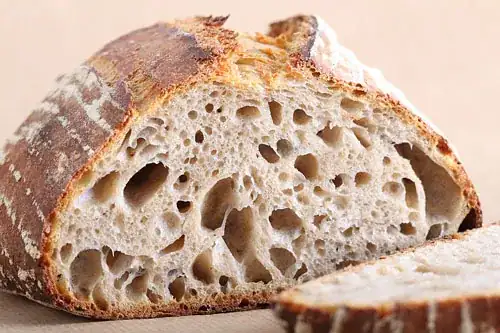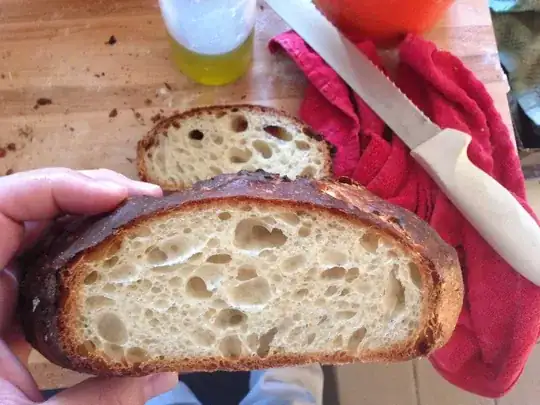No matter what I do, my recipe produces bread that is pretty dense, I get none of those nice huge holes in the crumb. My recipe goes like this:
- 500g flour (300g wheat, 200g rye)
- 350ml water
- 2 tbsp vinegar
- two pinches of salt
- I use 1 packet of dry active yeast (for 500g of flour) or fresh yeast (20g)
I typically use my my stand mixer w/ dough hook to mix this for about 5-10 minutes. Then let it proof for 20 minutes, flatten and let rise for another hour. Then I bake the bread starting at 260 celsius for the first ten minutes, then decreasing to 200-200 until finished. I create steam at the beginning by pouring hot water on a baking tray.
What could possible be wrong with my recipe that prevents me from getting crumb like this? Is that only achievable with sourdough starter? I experimented with that for a while and my results were a little bit better, but not quite where I want to be.



